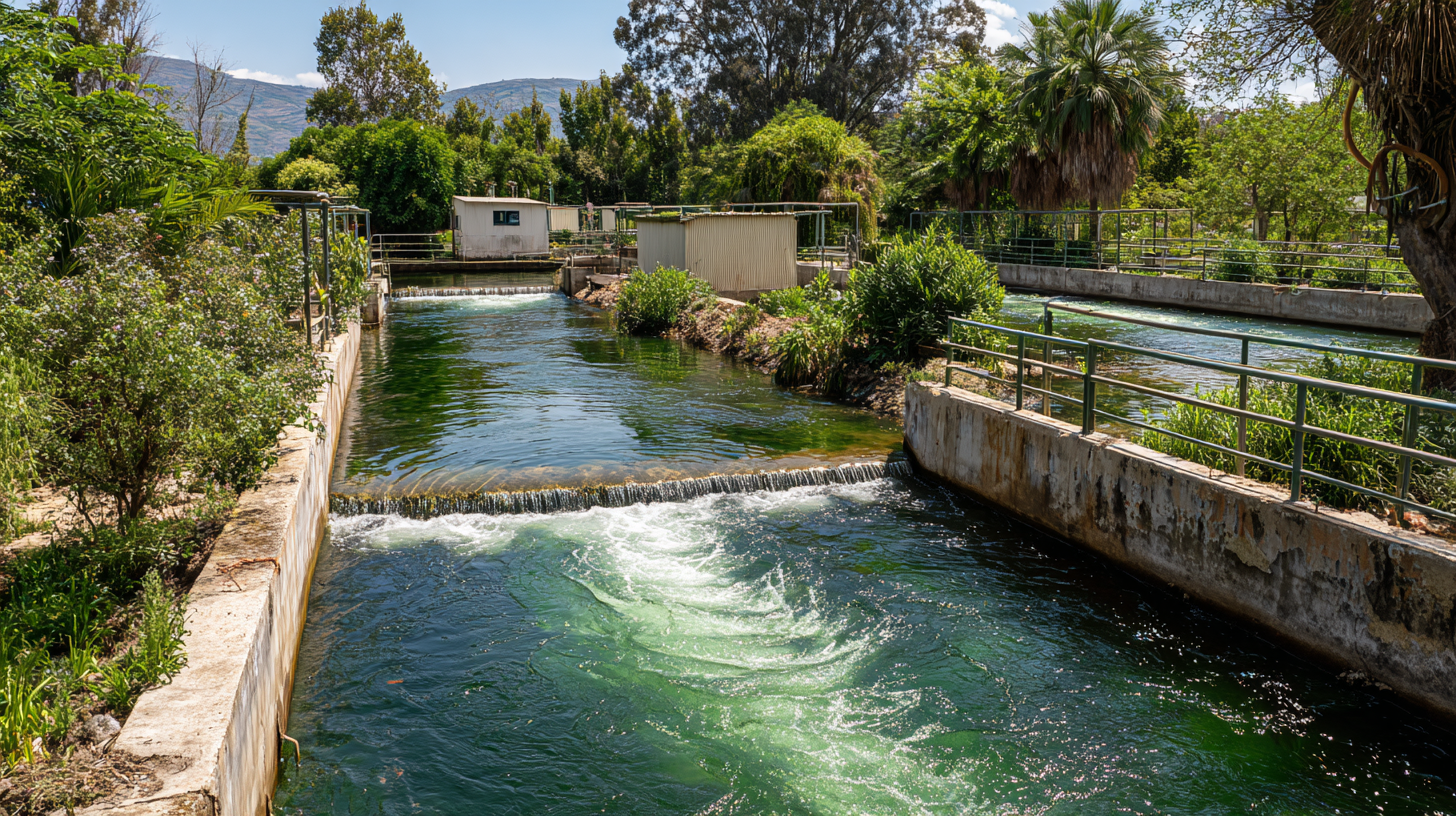The effective management of water resources is increasingly crucial in today's world, where sustainability is at the forefront of environmental concerns. One fundamental aspect of this management is adherence to Discharge Standards, which govern the release of wastewater into natural bodies of water. These standards play a vital role in ensuring that the quality of water discharged meets environmental safety requirements, protecting ecosystems, and public health.

As we delve into the complexities of sustainable water management practices, it is essential to understand the implications of these standards and how they can be effectively integrated into various industrial and municipal operations. By leveraging advanced technologies and best practices, stakeholders can optimize their emission strategies, achieve compliance with Discharge Standards, and contribute to a more sustainable future.
This exploration will highlight the importance of robust regulatory frameworks and innovative solutions in enhancing water quality while promoting responsible water use in our communities.
Discharge standards play a crucial role in water resource management by establishing the maximum allowable levels of pollutants and other harmful substances that can be released into natural water bodies. These standards are essential for protecting aquatic ecosystems, maintaining biodiversity, and ensuring the safety of water for human consumption and recreational activities. By regulating the quality of wastewater before it is discharged, these standards help prevent the degradation of water quality and promote sustainable practices in water management.

Moreover, the importance of discharge standards extends beyond environmental protection; they also facilitate economic benefits. Compliance with discharge standards can enhance public health outcomes and reduce treatment costs for wastewater. For industries, adhering to these standards fosters innovation, as companies are often encouraged to develop cleaner technologies and more efficient processes. Ultimately, by prioritizing discharge standards, water resource management not only safeguards ecosystems but also contributes to sustainable economic development.
Effective discharge standards are critical components for sustainable water management practices, ensuring that wastewater is treated adequately before being released back into the environment. Recent studies highlight the importance of establishing clear, enforceable discharge standards that align with both industrial capabilities and environmental sustainability goals. For instance, the systematic review of industrial wastewater management reveals that while various technical and administrative barriers exist, collaboration across sectors can enhance overall compliance and water quality outcomes.
In the context of urban sustainability, evolving discharge standards, particularly in regions like India, emphasize the need for continuous assessment of sewage treatment processes and their environmental impacts. The integration of advanced treatment technologies is essential to meet increasingly stringent regulations, especially concerning pollutants like PFAS, which have been increasingly scrutinized in places like North Carolina. These developments signal a significant shift towards a more sustainable approach in managing wastewater, reflecting the growing recognition of the critical role that effective discharge standards play in safeguarding water resources and public health.
Ultimately, the emphasis on structured approaches to discharge documentation and communication among stakeholders, as seen in the healthcare sector, mirrors the need for clarity and coherence in environmental management practices. Enhanced discharge planning fosters better patient outcomes, akin to how robust water management practices can lead to healthier ecosystems and communities.
Industrial discharges into aquatic ecosystems pose significant risks to both environmental health and biodiversity. When factories and industrial facilities release wastewater containing harmful contaminants, it disrupts the natural balance of aquatic environments. These pollutants can lead to toxic conditions for wildlife, altering species composition and reducing populations of sensitive organisms. Heavy metals, chemicals, and nutrients from industrial waste can accumulate in water bodies, resulting in bioaccumulation in the food chain that ultimately harms larger predators, including humans who rely on these ecosystems for food.
Furthermore, the impact of such discharges extends beyond immediate toxicity. They can lead to eutrophication, a process where excessive nutrients promote algal blooms. These blooms deplete oxygen levels in the water, creating dead zones where marine life cannot survive. The degradation of these habitats not only threatens aquatic species but also affects recreational activities and the livelihoods of communities that depend on healthy water resources.

Implementing stringent discharge standards and sustainable water management practices is crucial to mitigate these impacts and ensure the protection of aquatic ecosystems for future generations.
Implementing sustainable water management practices requires a multifaceted approach that addresses both ecological and community needs. One key strategy is the integration of advanced technologies that enable real-time monitoring of water quality and usage. By utilizing sensors and automated systems, water managers can promptly identify contamination events and inefficiencies in consumption. This proactive method not only helps in maintaining compliance with discharge standards but also promotes healthier ecosystems by reducing pollution levels in water bodies.
Another significant strategy is fostering stakeholder engagement and education. Involving local communities in water management decisions ensures that practices are tailored to specific regional needs and challenges. Workshops, outreach programs, and collaborative projects can empower residents to adopt water-saving techniques and participate in local conservation efforts. By building a strong partnership between authorities and the community, sustainable practices become more feasible and effective, ultimately leading to better environmental outcomes and compliance with established discharge standards.
This chart illustrates the discharge standards across various states to highlight the differences in sustainable water management practices. The data reflects the maximum permissible discharge levels (in mg/L) for key pollutants in rivers, showcasing the need for standardized practices in water management.
Discharge management plays a critical role in sustainable water management practices, yet the regulatory challenges in this area are substantial. According to the Environmental Protection Agency (EPA), the National Pollutant Discharge Elimination System (NPDES) permits around 45,000 facilities nationwide, but compliance rates with discharge standards remain inconsistent. A report by the Water Environment Federation highlights that approximately 20% of these facilities are non-compliant, posing significant risks to water quality and public health. This inconsistency underscores the necessity for more stringent regulatory frameworks and innovative monitoring technologies to ensure that all facilities meet environmental standards.
On the other hand, opportunities abound for enhancing discharge management practices through regulatory reforms. The introduction of adaptive management strategies, as suggested by the U.S. Geological Survey, can help agencies respond effectively to changing environmental conditions and emerging pollutants. Moreover, the integration of real-time monitoring systems can improve transparency and accountability within the discharge management process. As highlighted in the recent Water Quality Assessment, communities that adopt such technologies not only enhance compliance rates but also gain public trust, reinforcing the need for policies that encourage the adoption of sustainable practices.
| Parameter | Standard Limit (mg/L) | Current Average Discharge (mg/L) | Compliance Status | Regulatory Authority |
|---|---|---|---|---|
| Biochemical Oxygen Demand (BOD) | 30 | 25 | Compliant | EPA |
| Total Suspended Solids (TSS) | 30 | 40 | Non-Compliant | EPA |
| Nitrate Nitrogen | 10 | 8 | Compliant | EPA |
| Phosphorus | 1 | 2.5 | Non-Compliant | EPA |
| Heavy Metals (Total) | 0.1 | 0.05 | Compliant | EPA |






